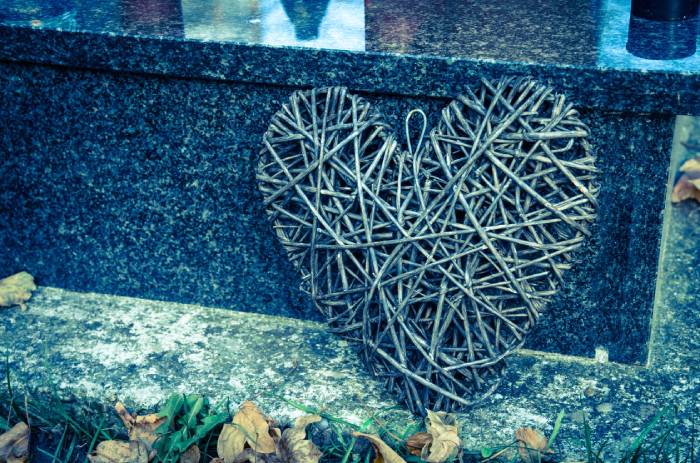Good Etiquette Guide for the Surviving Family – Day of Visitation or Funeral
 There are many things for the bereaved to consider on the funeral or visitation day. To help, we’ve listed many of these in alphabetical order below.
There are many things for the bereaved to consider on the funeral or visitation day. To help, we’ve listed many of these in alphabetical order below.
The Day of the Funeral: What to do, what to say.
Clothing/Dress
You are not required to wear black on the day of the funeral; however, showing respect and honor for your loved one’s memory does require wearing conservative clothing that reflects this sense of dignity and decorum.
- Bright colors and loud patterns may send the wrong message to visitors, other mourners, and family members.
- If the rest of the family is wearing black, try to comply with a dark or somber color, even if it’s not your style. A funeral isn’t the right time to make a fashion statement or to stand out as an individual.
Condolences and Awkward Questions
Be prepared to hear words of comfort that are awkward or seem inappropriate, such as, “You’ll get over it,” “It was her time,” or, “I know exactly how you feel because I lost my little Chihuahua last week.”
- If you can manage it, a simple “thank you” is sufficient.
- Expect many questions regarding the circumstances of your loved one’s passing, especially if it was sudden, unexpected, or involved in an accident.
- Prepare a brief response, and remember that you aren’t obligated to tell the entire story. Most people simply want to give you an opportunity to talk, although there are others whose morbid curiosity won’t be satisfied without hearing every detail. Including the cause of death in the obituary, if appropriate, can alleviate some of these questions.
- Above all, if it is possible, be gracious to all who express sympathy, regardless of how inconsiderate or unfeeling their remarks might appear. They will someday be in your place and understand what is and isn’t inappropriate.
Food
Expect to be inundated with gifts of food: casseroles, pizzas, rolls, desserts, salads, and frozen meals. You may find that your fridge is suddenly too small to hold it all.
- It can be helpful to reserve space in a neighbor’s or close friend’s fridge or freezer or to let people know when they call that you are well-stocked already.
- Whoever receives non-disposable dishes at the door must ensure they are marked with the giver’s name and phone number so they can be returned, and all gifts of food should be recorded in your notebook so they can be acknowledged later.
Funeral Procession
If you are riding in the funeral home’s limousine to the cemetery on the day of the funeral, you won’t need to worry about proper etiquette for the funeral procession.
- If you are driving, turn on your headlights and simply follow the car ahead of you at a short distance.
- Funeral processions are allowed to run red lights and stop signs (assuming conditions are safe) in order to stay together.
See Funeral Processions for more detailed information.
Greeting Guests at the Funeral Service
You are not required to greet anyone at the funeral service. It is understood that, in your grief, you may need to stay close to your family and wait until later to acknowledge other mourners.
- If you decide to hold the service in a funeral chapel, you may have the option of sitting apart behind a curtain or screen that allows you to view the service without being seen.
- If the service is held in a place of worship, the front rows will generally be reserved for family, and you will be seated last, just before the service begins. Discuss these options with your clergy or funeral director.
- Don’t worry about showing grief or shedding tears; it’s perfectly acceptable. No one expects the survivors to be stoic or cheerful, no matter the circumstances of the loved one’s passing.
If you don’t wish to be comforted by other mourners immediately after the funeral service, plan to be escorted out first to the transportation for the funeral procession. Otherwise, you should expect to be surrounded by people wishing to express their condolences.
Graveside Service (interment or inurnment)
It is appropriate to hold a public or private graveside service for either an interment (committing the casket to the grave) or an inurnment (placing your loved one’s cremated remains in a columbarium, cremation burial grave, or garden niche). You may decide whether to plan such a service and, if so, how formal or informal it is to be.
- Etiquette demands a spirit of dignity and respect at the grave site. There is perhaps no more solemn occasion in life than the committal of a loved one’s body to the earth.
- Clothing should be conservative, and behavior should be quiet and respectful.
- Eating or drinking in a cemetery, sitting on gravestones, or running, playing, or laughing is inappropriate.
- Children who attend the graveside service should be made aware of these standards of behavior.
Pets are not allowed in many cemeteries; if you have a particularly compelling reason to bring a pet to the interment, check the cemetery’s policies first. Keep your pet leashed, and clean up after it. Service animals are allowed.
The funeral home will have chairs for the family graveside on the day of the funeral.
- Other mourners are expected to stand. (Extra chairs can be made available for the elderly.)
- Because people will be standing, it is customary to keep the ceremony brief.
You will need to decide whether to leave before the committal (lowering the casket into the ground). For some, this final act is too much to bear. It is proper to either leave or stay. Be sure to let your funeral director know your preference.
Visitation (wake) and Visitors
The visitation or wake is an opportunity before the funeral for the family of the deceased to receive guests and, often, for guests to view the open casket.
- It can be as informal as an open invitation to receive visitors at your own home or as formal as specified hours for visitation at the funeral home.
- Even if you don’t hold a wake or visitation, expect friends to call on you at home; many will drop in unannounced, often with flowers or a casserole in hand.
- For home visitors, you may want to keep a pot of coffee going and some refreshments on hand; this would be an appropriate item to mention when a friend asks what they can do to help.
- Having friends to keep the coffee cups washed and the coffee hot can take some of the burden off the family, and most people are very happy to help in this way.
- If the casket is present during visitation, guests will be expected to pause briefly for a moment of quiet reflection or prayer. They will greet you before or after pausing at the casket, depending on whether you are occupied when they arrive.
- You do not have to seek out each guest, especially if there is a large crowd, but do spend time with each one if possible rather than focusing on a select few.
- Be sure to supply a guestbook for visitors to sign on the day of the funeral. Later, you can use it to send acknowledgments if you wish or simply as a source of comfort.
Aside from the guest register, keep a notebook handy to record the names of those who bring food and flowers, those who visit, and those who help (or offer to help) in any way – do not depend on your memory.
Contributor: Jenny Mertes

